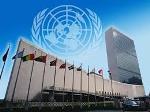Published on Thu, 2016-02-18 09:00
The widening rich-poor gap is recognised as a major social and political problem, but what measures can be taken nationally and internationally to address this issue? Economic inequality is now identified as one of the biggest challenges of our time. |
Published on Thu, 2016-02-18 07:48
The Paris Agreement adopted by the 21st Conference of Parties (COP21) under the United Nations Framework Convention on Climate Change (UNFCCC) on 12 December, was the outcome of major battles on a multitude of issues, especially between developed and developing countries. Developing countries by and large had these negotiating objectives. They wanted to (a) defend the Convention and not let it be changed or subverted; (b) ensure that the Agreement is non-mitigation centric with all issues (including adaptation, loss and damage, finance and technology, besides mitigation) addressed and in a balanced manner; (c) ensure differentiation in all aspects be reflected, with the principles of equity and common but differentiated responsibilities and respective capabilities; (d) ensure that developed countries enhance the provision of finance and technology transfer’ (f) ensure that ‘loss and damage’ is recognised as a separate pillar apart from adaptation and for (g) legally binding provisions, especially on the developed countries. |
Published on Fri, 2016-02-12 14:10
The United Nations Environmental Program (UNEP) recently launched the report of its Financial Inquiry into the Design of a Sustainable Financial System (“the Report”), established in early 2014 to explore how to align the financial system with sustainable development, with a focus on environmental aspects. UNEP’s Financial Inquiry set out to respond three questions: 1) under what circumstances should measures be taken to ensure that the financial system takes fuller account of sustainable development?, 2) what measures have been and might be more widely deployed to better align the financial system with sustainable development? and 3) how can such measures best be deployed? |
Published on Fri, 2016-02-12 14:05
Given that most of their population lives in rural areas, the rural economies in the Least Developed Countries (LDCs) will need to undergo structural transformation in order to reach the United Nation's Sustainable Development Goals (SDGs), the UN Conference on Trade and Development (UNCTAD) has said. In its latest Policy Brief (No. 46 of February 2016), UNCTAD has proposed that the LDCs engage in poverty- oriented structural transformation of rural areas, encompassing the upgrading of agriculture, the diversification of rural economic activities and the strengthening of synergies between both. |
Published on Thu, 2016-02-04 16:09
The Swiss Parliament is discussing corporate tax reform III. In development policy terms, with this reform Switzerland is going from the frying pan into the fire. For every US dollar a developing country gains, it loses more than two. A wide range of capital transfers help account for the constant drain of financial resources away from developing countries. According to calculations by Eurodad, the European Network on Debt and Development, developing countries lost US$1,583 billion in this way in 2012. That is more than 10 times the US$120 billion that flowed into developing countries in 2012 in the form of official and private development assistance. |
SUSCRIBE TO OUR NEWSLETTER







